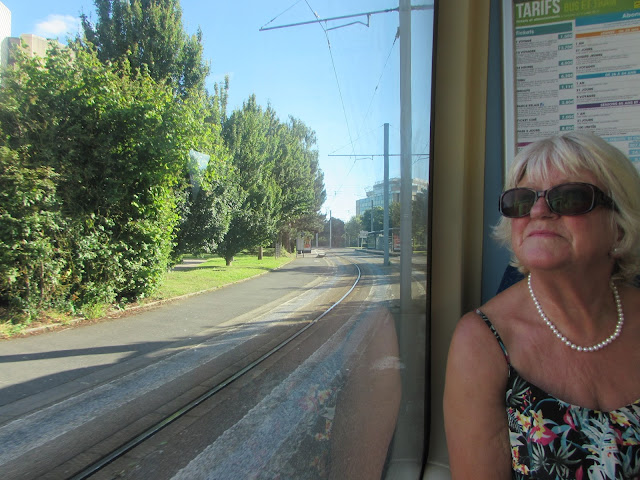This picture shows the front entrance to the museum. Note the stylised para wings badge built into the porch. This motif is repeated on the side of the building as you can see in the next picture. Also note the flags of the Allied combatants, I'm sure you can work these out for yourself.
The memorial itself is dedicated to the 6th Airborne Division and rather sidelines the role of 7th Parachute. The 6th Airborne did take the bridges but it was the responsibility of the 200 parachutists to defend the crucially strategic targets against the inevitable German counter attacks which came in the form of planes, tanks, gunboats and heavy infantry fire. All of these were successfully repulsed at some considerable cost until the arrival of Lord Lovat's commandos at 13-30.
In the background here is the original Pegasus bridge. It was built in 1934, liberated in 1944 and replaced in 1994 when the canal was widened. It now stands in the memorial grounds. As does a replica of the Horsa glider and a section on the remarkable Bailey bridge. See below.
You can see the present day Pegasus bridge in the background of this picture. As you come to expect with "other ranks", there is not much mention of names unless they are casualties so it came as no surprise to find no reference to Jock in the museum. Except..... he is in here somewhere!
The next picture shows the famous Gondree Cafe as it was next to the bridge it trades on the epithet "first house to be liberated" in France. It has done so successfully for 74 years and is still run by the granddaughter of the war time owners.
Back to Caen for an evening out. The efficient modern tram runs past our road end, so it's the obvious choice. Caen was of course flattened in WW2 with little surviving except for the Abbeys where 2000 locals optimistically sheltered from the bombs.
The Abbey aux Hommes built by William the Conquerer to atone to the Pope for his religiously illegal marriage to Matilda.
The architectural style is of course Norman, as you can see inside and out.
Also inside you can see the last resting place of the good King.
Finally some pictures of "old" Caen. Tomorrow will be much the same as Friday only the other way round as it were.
We did indeed have a good run back, enhanced by Lewis Hamilton's win in the British Grand Prix and Andy Murray's Wiimbledon title.


















